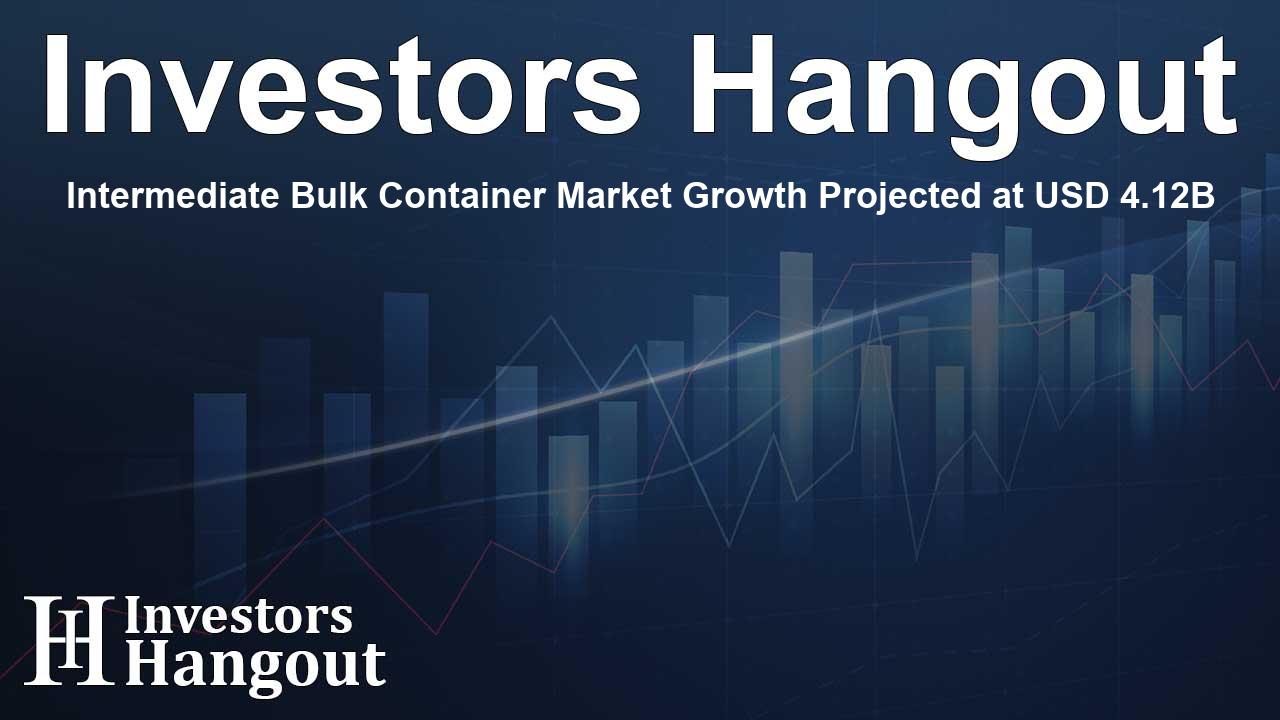Intermediate Bulk Container Market Growth Projected at USD 4.12B

Market Overview of Intermediate Bulk Containers
The global intermediate bulk container market is on the verge of significant growth, estimated to increase by USD 4.12 billion between 2025 and 2029. This impressive growth projection underscores the escalating demand from the construction sector and the redefined market landscape driven by artificial intelligence innovations. According to current market research, this sector is expected to witness a compound annual growth rate (CAGR) exceeding 4.8% during the forecast period.
Key Drivers of Market Growth
One of the primary factors propelling the market forward is the heightened demand for intermediate bulk containers (IBCs) from the construction industry. As various industrial activities start to rebound post global disruptions, there is an increasing inclination towards using material handling containers. The construction sector is experiencing a revival, positively influencing the need for efficient, high-quality packaging solutions.
Revival in Industries Post-Pandemic
The economic challenges posed by the Covid-19 pandemic saw a decline in demand for many sectors, including chemicals and petrochemicals. However, with the resurgence of global industrial activities, a renewed demand for IBCs is emerging. This trend is not solely limited to construction, as other sectors like heavy machinery and the automobile industry are also ramping up production, contributing to a wider requirement for IBCs.
Challenges Facing the Market
Despite promising growth, the intermediate bulk container market faces hurdles, particularly regarding the volatility of raw material prices. As IBCs are constructed from varied materials—such as metals and plastics—fluctuations in the price of these raw materials can impact overall manufacturing costs. Strong demand for eco-friendly solutions is also pushing companies to adapt their offerings, necessitating innovations in materials.
Impact of Regulations
Regulatory pressures regarding eco-friendly packaging solutions are becoming more pronounced. Federal regulations aimed at reducing carbon footprints are influencing how companies approach the design and manufacturing of IBCs. Suppliers face the dual challenge of maintaining product reliability while incorporating sustainable practices.
Current Market Trends
An essential shift towards sustainable materials is prevalent in the IBC market. The increasing emphasis on reducing environmental impact has made recycled and eco-friendly materials popular. Industries are recognizing that aligning their practices with sustainability can not only meet regulations but also respond to consumers' growing preference for environmentally conscious products.
Innovations Through AI
Artificial intelligence is increasingly becoming a driving force for innovation within the intermediate bulk container landscape. Companies are leveraging AI for improved efficiency during the manufacturing process, enhancing inventory management, and providing better logistics solutions. This technology aids in fine-tuning the production lines, significantly contributing to cost-reduction efforts and product quality assurance.
Segment Overview and Market Outlook
The market's growth is also influenced by the wide variety of end-user industries for IBCs, including chemicals, pharmaceuticals, and food production. Understanding these segments allows for more tailored solutions that meet specific industry demands.
Geographical Insights
Geographically, the market for intermediate bulk containers is displaying varied trends. The Asia-Pacific region is anticipated to lead in terms of growth, propelled by industrial development and increasing trade activities. This is complemented by strong growth prospects in North America and Europe as industries modernize their supply chain processes.
Frequently Asked Questions
What is the projected growth of the intermediate bulk container market?
The market is estimated to grow by USD 4.12 billion from 2025 to 2029, with a CAGR of over 4.8%.
Which sectors are driving the demand for IBCs?
Key sectors include construction, heavy machinery, pharmaceuticals, and e-commerce, all demanding efficient bulk handling solutions.
What are the major challenges in the intermediate bulk container market?
Challenges include price volatility of raw materials and increasing regulatory pressures for eco-friendly packaging.
How is AI influencing the intermediate bulk container industry?
AI is enhancing manufacturing efficiency, improving logistics, and fostering innovations that cater to market demands.
What materials are primarily used in the production of IBCs?
Common materials include plastics, metals, and high-density polyethylene, each offering unique benefits for different applications.
About The Author
Contact Thomas Cooper privately here. Or send an email with ATTN: Thomas Cooper as the subject to contact@investorshangout.com.
About Investors Hangout
Investors Hangout is a leading online stock forum for financial discussion and learning, offering a wide range of free tools and resources. It draws in traders of all levels, who exchange market knowledge, investigate trading tactics, and keep an eye on industry developments in real time. Featuring financial articles, stock message boards, quotes, charts, company profiles, and live news updates. Through cooperative learning and a wealth of informational resources, it helps users from novices creating their first portfolios to experts honing their techniques. Join Investors Hangout today: https://investorshangout.com/
The content of this article is based on factual, publicly available information and does not represent legal, financial, or investment advice. Investors Hangout does not offer financial advice, and the author is not a licensed financial advisor. Consult a qualified advisor before making any financial or investment decisions based on this article. This article should not be considered advice to purchase, sell, or hold any securities or other investments. If any of the material provided here is inaccurate, please contact us for corrections.
